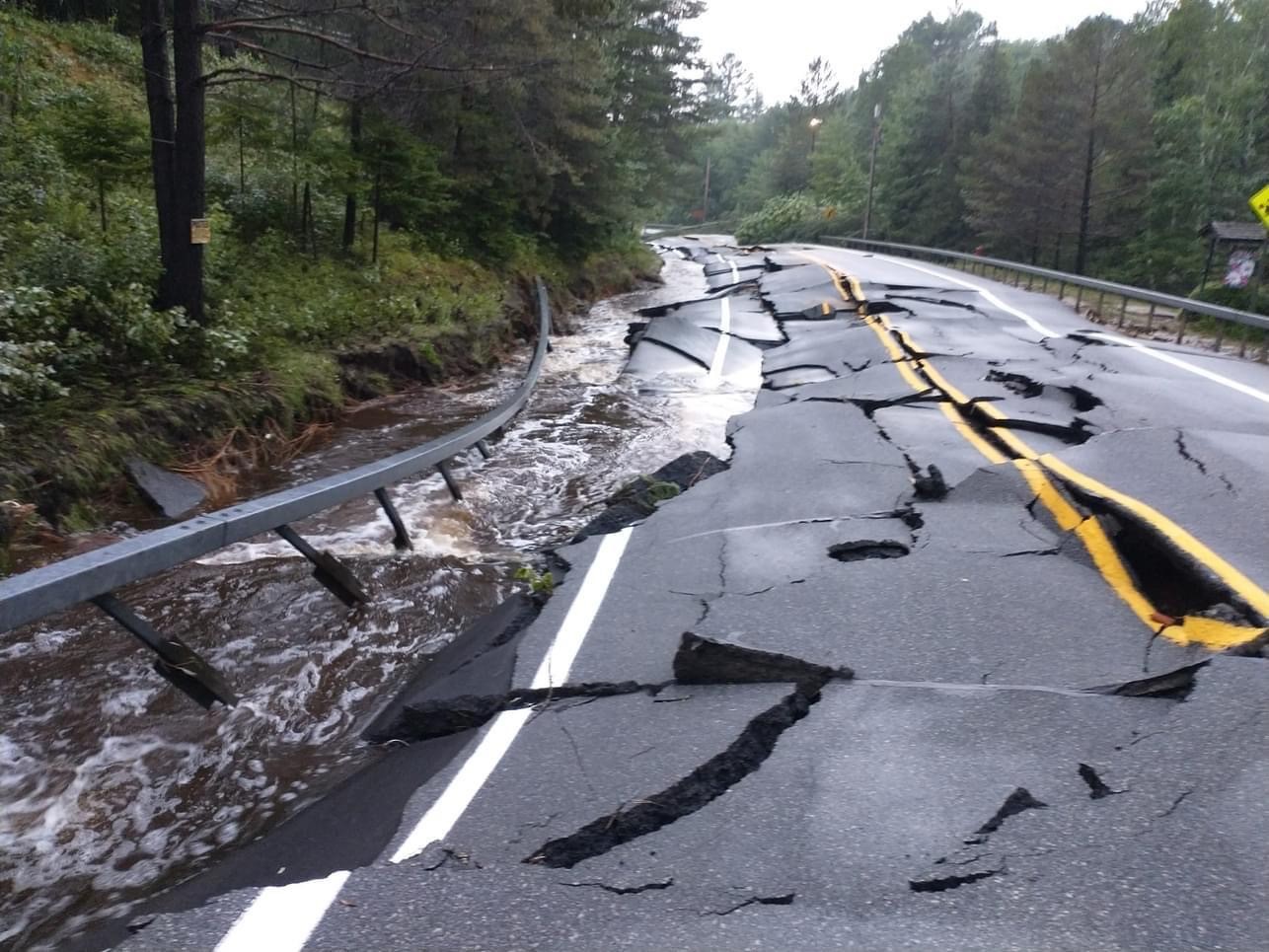Climate
The Adirondack Park’s forests, wetlands, and waterways are vital in helping communities and ecosystems adapt to climate change. As extreme weather events, rising temperatures, and shifting ecosystems become more common, the Adirondack Park Agency (APA) integrates science-based strategies to enhance climate resilience. Through the practical application of research, regulation, and collaboration, the APA works to ensure that the Park’s natural resources continue to protect biodiversity, water quality, and local communities.
Why Climate Resilience Matters
 Climate change is already affecting the Adirondacks, bringing more frequent heavy rainfall, increased flooding, rising temperatures, and changing wildlife habitats. These shifts threaten native species, water quality, and the stability of built infrastructure. However, natural landscapes—such as wetlands, forests, and floodplains—can help buffer these impacts. Wetlands absorb floodwaters, forests store carbon, and healthy watersheds protect drinking water supplies. By strengthening the Park’s natural resilience, we can reduce climate risks for both ecosystems and people.
Climate change is already affecting the Adirondacks, bringing more frequent heavy rainfall, increased flooding, rising temperatures, and changing wildlife habitats. These shifts threaten native species, water quality, and the stability of built infrastructure. However, natural landscapes—such as wetlands, forests, and floodplains—can help buffer these impacts. Wetlands absorb floodwaters, forests store carbon, and healthy watersheds protect drinking water supplies. By strengthening the Park’s natural resilience, we can reduce climate risks for both ecosystems and people.
How the Adirondack Park Agency Supports Climate Resilience
The APA applies science-based planning and policy to help the region adapt to climate change while maintaining the ecological integrity of the Park. The Agency:
- Protects natural carbon sinks, such as wetlands and forests, which absorb and store carbon dioxide to help mitigate climate change using the best available data.
- Encourages nature-based solutions to adaptation by guiding projects away from high-risk areas, such as flood-prone zones, and promoting sustainable design.
- Supports ecosystem biodiversity by preserving climate-resilient habitats, ensuring species can adapt to shifting temperatures, changing precipitation patterns, and habitat loss caused by climate change.
- Provides a public platform for climate experts to present at APA board meetings, ensuring that the latest science informs decision-making and public awareness.
- Collaborates with local communities to enhance climate adaptation efforts by expediting permitting process after natural disasters.
By prioritizing natural resilience and sustainable development, the APA helps ensure that the Adirondack Park remains a thriving and climate-ready landscape.
What You Can Do to Help
Everyone has a role to play in building climate resilience. Here’s how you can contribute:
Support healthy ecosystems
- Plant native vegetation, protect forests, and avoid altering wetlands, which serve as natural flood buffers.Reduce your carbon footprint
- Use energy-efficient appliances, drive less, and support clean energy initiatives to help mitigate climate change.Prepare for extreme weather
- Improve stormwater management on your property, elevate vulnerable structures, and be aware of flood risks.Maintain vegetation along shorelines
or replant areas that have been cut.
By working together, we can protect the Adirondack Park’s natural landscapes and ensure a more resilient future for both people and wildlife. To learn more, contact our office.